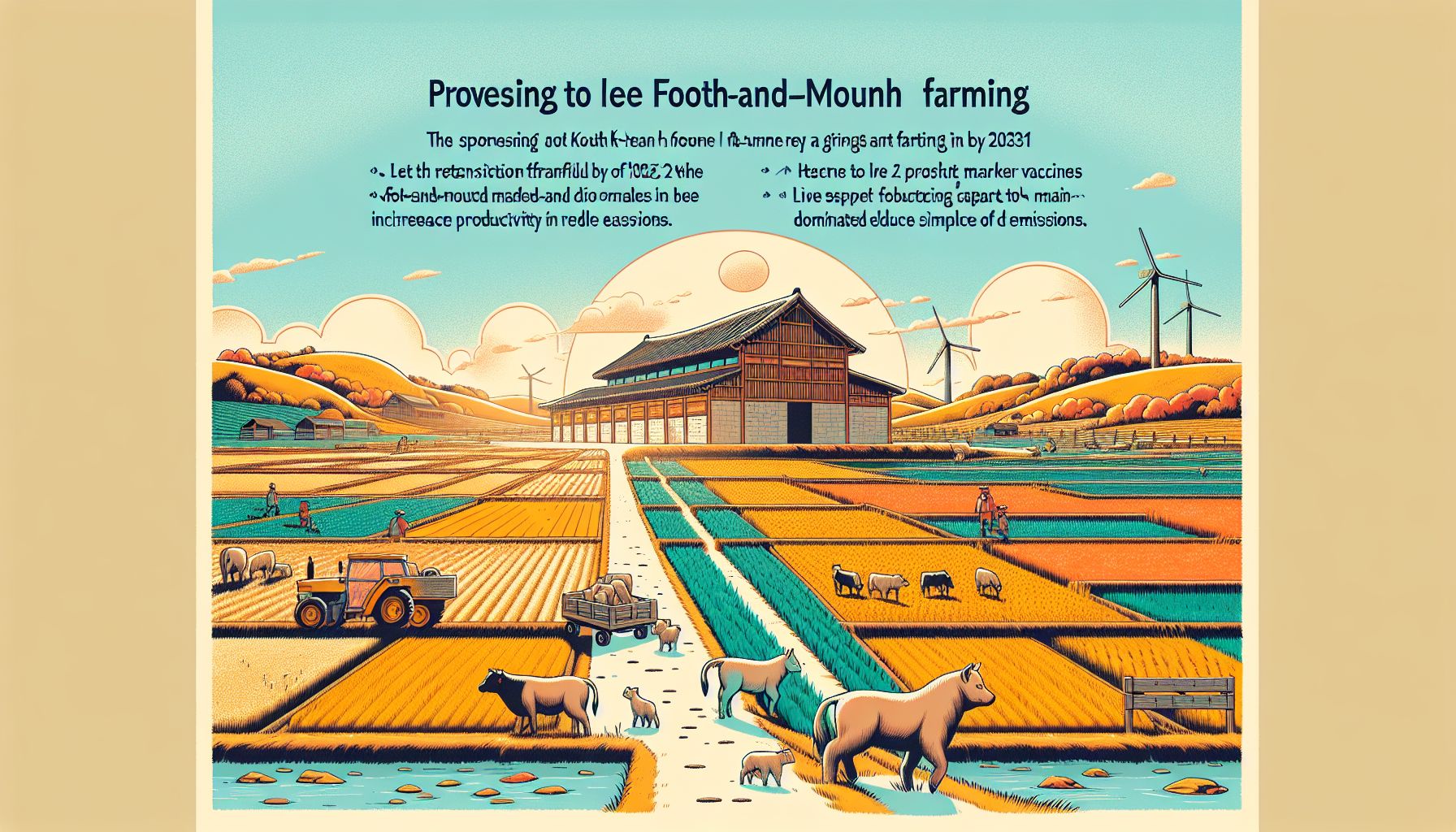South Korea Targets 2031 for Foot-and-Mouth Disease-Free Status with Vaccine Transition

Seoul, Monday, 30 June 2025.
South Korea plans to transition to live marker vaccines in 2026, aiming for FMD-free status by 2031, enhancing farm productivity and reducing emissions.
Collaborative Approach for Vaccine Transition
The recent meeting, which brought together officials from the Ministry of Agriculture, Food and Rural Affairs, industry stakeholders, and academic experts, marked a coordinated effort to shift towards live marker vaccines against foot-and-mouth disease in South Korea. This transition aims to start in 2026 and is a strategic move towards eradicating FMD in the country by 2031 [1].
Impacts on Productivity and Environment
The switch to live marker vaccines is expected to significantly improve farm productivity by shortening shipment days by approximately 10 days, as evidenced by trials [2]. Moreover, this shift is projected to reduce carbon emissions due to decreased feed consumption and manure production among livestock, aligning with carbon neutrality goals [3].
Financial and Structural Preparations
Financially, the South Korean government has earmarked a budget of approximately 3.64 billion KRW annually to support this transition. Discussions are in place to ensure that these funds facilitate the seamless supply of marker vaccines to farms, beginning in 2026 [1][2].
Educational and Monitoring Initiatives
Accompanying the vaccine transition are nationwide monitoring and educational campaigns. These involve comprehensive testing and monitoring for FMD across farms and slaughterhouses to mitigate outbreak risks while promoting adherence to new vaccination protocols among livestock farmers [4].